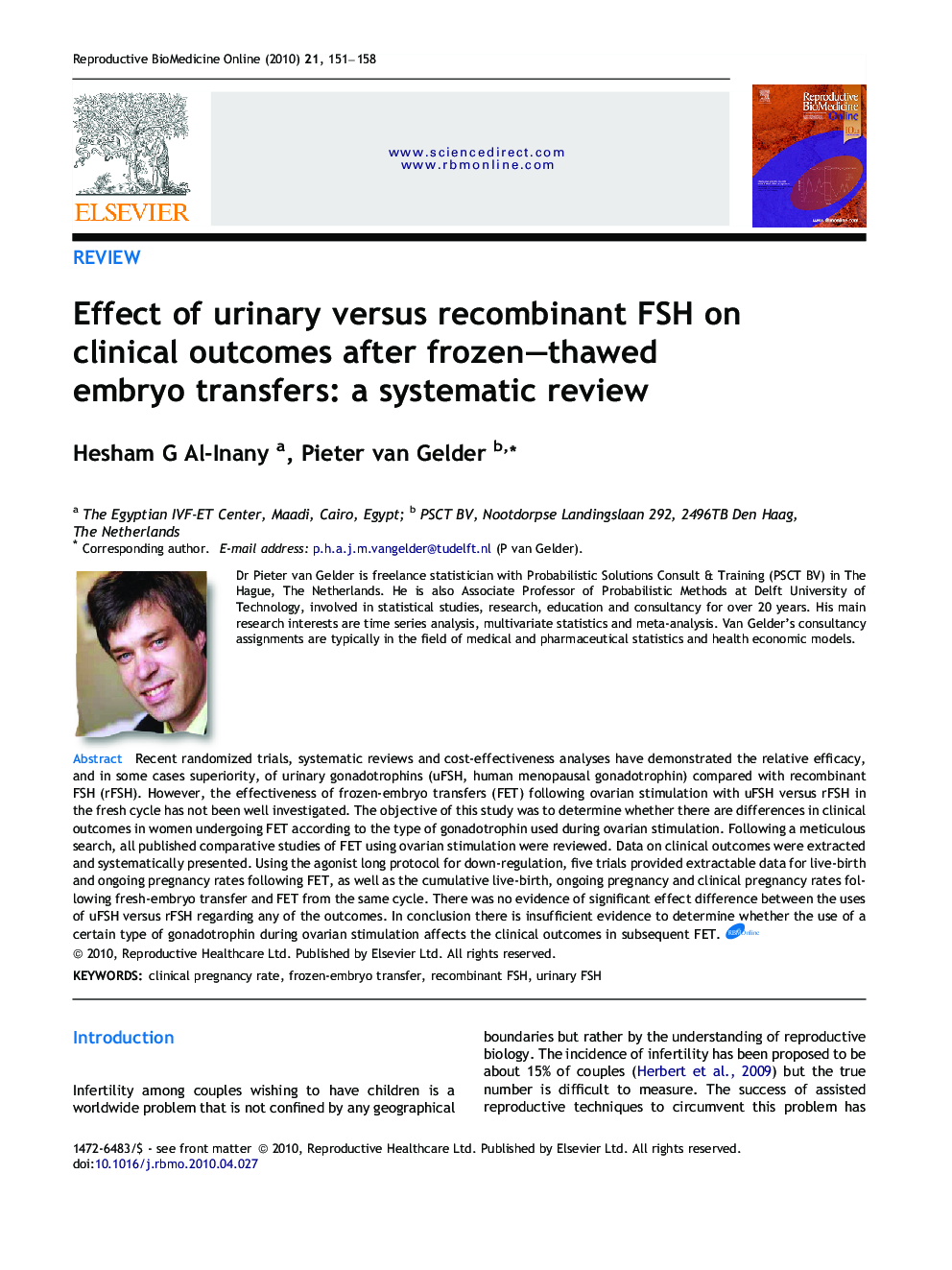| Article ID | Journal | Published Year | Pages | File Type |
|---|---|---|---|---|
| 3971745 | Reproductive BioMedicine Online | 2010 | 8 Pages |
Recent randomized trials, systematic reviews and cost-effectiveness analyses have demonstrated the relative efficacy, and in some cases superiority, of urinary gonadotrophins (uFSH, human menopausal gonadotrophin) compared with recombinant FSH (rFSH). However, the effectiveness of frozen-embryo transfers (FET) following ovarian stimulation with uFSH versus rFSH in the fresh cycle has not been well investigated. The objective of this study was to determine whether there are differences in clinical outcomes in women undergoing FET according to the type of gonadotrophin used during ovarian stimulation. Following a meticulous search, all published comparative studies of FET using ovarian stimulation were reviewed. Data on clinical outcomes were extracted and systematically presented. Using the agonist long protocol for down-regulation, five trials provided extractable data for live-birth and ongoing pregnancy rates following FET, as well as the cumulative live-birth, ongoing pregnancy and clinical pregnancy rates following fresh-embryo transfer and FET from the same cycle. There was no evidence of significant effect difference between the uses of uFSH versus rFSH regarding any of the outcomes. In conclusion there is insufficient evidence to determine whether the use of a certain type of gonadotrophin during ovarian stimulation affects the clinical outcomes in subsequent FET.Clinical efficiency in IVF procedures has been debated for years. Defining a unified goal, or endpoint, for IVF treatments has shown marked discrepancies among clinicians, regulatory bodies and organizations; with some regarding a clinical pregnancy, an ongoing pregnancy, a live-birth, or even a take-home baby as the primary outcome of IVF treatments. The objective of this systematic review was to determine the effectiveness of the use of urinary versus recombinant FSH on the results of frozen embryo transfers and the effect that this would have on the cumulative clinical results of IVF. This systematic review has shown that there is insufficient evidence to determine whether the use of a certain type of gonadotrophin during ovarian stimulation affects the clinical outcomes in subsequent frozen embryo transfers, such as live-birth rate, ongoing pregnancy rate, clinical pregnancy rate. With respect to cumulative rates, it is noted that no significant differences in live birth rate, ongoing pregnancy rate, and clinical pregnancy rate following fresh and frozen transfer cycles. It is concluded that well-designed and powered studies are needed to determine possible effects of the use of a certain type of gonadotrophin during ovarian stimulation on the clinical outcomes in subsequent frozen thawed embryo transfers.
